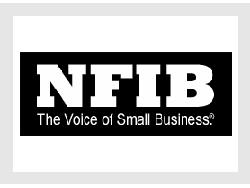NFIB Small Business Optimism Soared in May
Washington, DC, June 12, 2018-The Small Business Optimism Index increased in May to the second highest level in the National Federation of Independent Business (NFIB) survey’s 45-year history.
The index rose to 107.8, a three-point gain, with small businesses reporting high numbers in several key areas including compensation, profits, and sales trends.
“Main Street optimism is on a stratospheric trajectory thanks to recent tax cuts and regulatory changes. For years, owners have continuously signaled that when taxes and regulations ease, earnings and employee compensation increase,” said NFIB president and CEO Juanita Duggan.
The May report hit several records:
• Compensation increases hit a 45-year high at a record net 35%.
• Positive earnings trends reached a survey high at a net 3%.
• Positive sales trends are at the highest level since 1995.
• Expansion plans are the most robust in survey history.
In another interesting marker, a net 19 percent of small business owners are planning price increases, the highest since 2008 and a signal of a strong economy. A net 3% reported positive profit trends, up four points and the best reading in the survey’s history. In addition, a net 15% reported higher nominal sales in the past three months, up an astonishing seven points and the sixth consecutive strong month for sales.
“Small business owners are continuing an 18-month streak of unprecedented optimism which is leading to more hiring and raising wages,” said NFIB chief economist Bill Dunkelberg. “While they continue to face challenges in hiring qualified workers, they now have more resources to commit to attracting candidates.”
Small business owners continue to hire with a seasonally-adjusted net 18% planning to create new jobs. Twenty-nine percent of owners have job openings for skilled workers, the third highest reading since 2000. Twelve percent have job openings for unskilled workers, with the strongest demand in the transportation, travel, communications, and utilities sector. To compete in the job market, 35% of owners reported increases in labor compensation to attract job applicants.
The percentage of owners reporting capital outlays moved up one point to 62%, with 47% reporting spending on new equipment, 24% acquiring vehicles, and 16% improving expanded facilities. Thirty percent plan capital outlays in the next few months.
